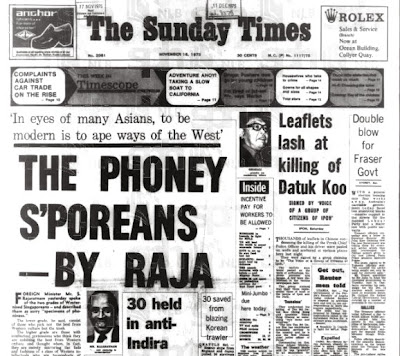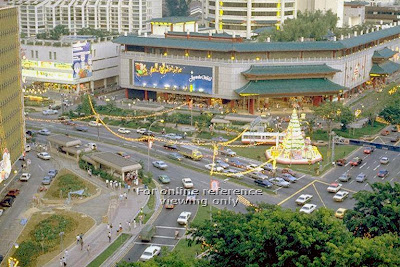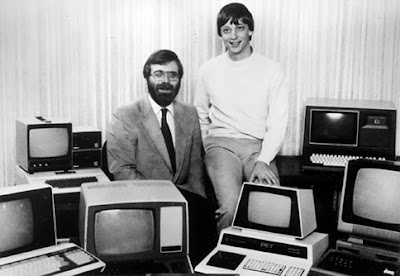![]() |
| A tailor in Little India, Singapore c 1986 |
According to the Bible, since the days of Adam and Eve, "so when the woman saw that the tree was good for food, that it was pleasant to the eyes, and a tree desirable to make one wise, she took of its fruit and ate. She also gave to her husband with her, and he ate. Then the eyes of both of them were opened, and they knew that they were naked; and
they sewed fig leaves together and made themselves coverings. (Genesis 3:6–7)".
In modern day society everywhere in the world, people are dressed with clothes in public ... no longer with fig leaves. With clothings for men and women everywhere today, the fashion industry evolved into an important economic needs for everyone. Manufacturing of clothes and apparels made of various material are produced on the latest machineries, methods and modern technology processes.
When I met a 63-year-old retired tailor friend recently, I am inspired to blog on this topic about the ways done in the past of tailors in Singapore. He told me that there are fewer tailors nowadays. Most of the pants imported from many countries with famous brands or brandless ones off the shelves of department stores or shops everywhere in Singapore.
Long, long ago in 1949, there was a woman, "Sew Sew" who comes round at Royal Air Force Tengah to provide sewing and mending services for residents.
Most people nowadays in our "throw-away society" would just throw away their torn clothings and buy new ones. Its also a fashion to cut holes in new jeans and make them appear the older and worn-out look the better!
How much things have changed in the fashion world since the days of the fig leaves worn by Adam and Eve in the Garden of Eden.
This is an old newsclip from The Straits Times, 24 July, 1955. Courtesy of NewspaperSG.
In the 1970s, former Foreign Minister S. Rajaratnam mentioned about the freedom of sartorial and tonsorial of individuals issue when speaking about the long hair campaign in Singapore decades ago.
An excerpt from The Straits Times, 16 November, 1975 on this related blog to share.
![]()
"The Phoney S'poreans - By Raja"
Foreign Minister Mr S. Rajaratnam yesterday spoke of the two grades of Westernised Singaporeans - and described them as sorry "specimens of phoniness".
The lower grade, he said, consist of those who pick not the best from Western culture but the trash.
The higher grade are those with intellectual pretensions who think they are imbibing the best from Western culture and thought when, in fact, they are merely mirroring the fads and fashions of a class of Western intellectuals who are by-products of Western societies in disarray and confusion."
Mr Rajaratnam also said Western values as propagated by the liberal establishment will be fatal not only to modernisation but to the survival of Third World countries like Singapore.
In the eyes of many Asians, to be modern was to apt the ways and mores of the West.
The imitation of the West is indiscriminate and where Asians show discriminating taste, they generally pick out what is shoddy, crude and tasteless in Western culture," he said.
"If Western fashion moguls dictate flare pants of mini-skirts or long hair or shaven cranium, the low grade Westernised Singaporeans will conform by refashioning his appearance," he added.
The modernised society and the lifestyles in Singapore and the world has changed and became smaller so much since the speech by Mr Rajaratnam in a seminar on "Asian Values and Modernisation" at the University of Singapore. He said many people equated modernisation with Westernisation.
Fashion has been influenced by the young generations by the modern stuff they see on TV and their iPhone, notebooks, tablets and whatever video devices on the Internet or YouTube. The news and things happening around the world are found immediately on Facebook anywhere, seen anytime. Instantaneous communication "live" and in realtime on Internet. How to shut them away?
During my primary schooldays in the 1950s, I have a classmate who wears a single earring on the left of his ear to go to school. He was shy and afraid that our friends would laugh at him. I did not laugh at him but I did not ask him because it was impolite. I returned home to ask my mother and she explained to me: "Some boys who were born with strong characteristics were told by the fortune-tellers or temple mediums that the child must wear an earring to pretend to be a girl. This way, the demons would then not take away the child's life". Whether superstitions or not, I just understand what my old-fashioned mother told me. My friend had lived a long life and very healthy. If this has happened today, my friend would not need to be afraid because it doesn't matter anymore. To wear earrings for boys with one ear or both ears, its now the "in thing" for fashion. Who cares that it was once a "sissy thing" done in the past.
Who says that wearing of earrings is only for the gals and ladies? It is now fashionable for modern guys and men, the young and the not so young ... everyone, everywhere. Breaking away from tradition is good for the fashion business too.
An individual's preference of how a person likes to wear what, where in the public is a freedom of everyone as long as not against the law. However, the civil laws may be different from country to country.
Based on "The Universal Declaration of Human Rights"
here Whereas recognition of the inherent dignity and of the equal and inalienable rights of all members of the human family is the foundation of freedom, justice and peace in the world,
Whereas disregard and contempt for human rights have resulted in barbarous acts which have outraged the conscience of mankind, and the advent of a world in which human beings shall enjoy freedom of speech and belief and freedom from fear and want has been proclaimed as the highest aspiration of the common people.
Singaporeans are the best dressed men and women in the world. That's not an exaggeration. We noticed them on the streets, in restaurants, shopping complex and everywhere in public in Singapore.
However, not the scenarios during the kampong days five decades ago.
When I was a young boy who visited the Great World Amusement Park, my mother and I had to be neatly dressed with shoes, not sandals, clogs or slippers. Please watch this "Project Neighbourhood" video clip
here .
Personally, I found that since I crossed the old age of 65 as a senior citizen and lucky to be still alive, I no longer worry about the things I worried about as a youth. I was never a fashion-conscience guy and too lazy to dress-up and follow the latest fashion. No wonder I did not have girl friends to be attracted because of how I wear in the kampong. Perhaps I was too lazy and just wear whatever is comfortable and simple after all these years. That's me, I thought. "Aiyah, never mind lah" whenever I went out with my friends to town.
It was my mother who wanted me to be dressed properly with my friends and schoolmates to places and functions.
One Chinese New Year in 1967 after I left school, my mother told me that my pants was too old after many washings and its better to get a new one. She then gave me money to buy a pair of new pants. At that time, I think it was the flared pants or piped trousers latest fashion. Anyways, I was an old-fashioned guy.
In the early days, Pagoda Street in Chinatown, Singapore with the most tailor shops for men in town. That was where I had my measurements and tailor-made the Chinese New Year pants because my mother could not sew them herself like this lady in the 1950s.
Sewing Lessons in the schools in the 1950sTailor Shops in Singapore in the Past![]() |
| A tailor in Little India c 1980s | | |
|
![]() |
| A tailor in Jalan Kayu in 1984 |
![]() |
| A family tailor in 1984 |
![]() |
| A tailor shop at Syed Alwi Road in 1986 |
![]() |
| A tailor at his shop in Muscat Street in 1988 |
![]() |
| A tailor shop in Tanjong Pagar in 1980 |
This blog is dedicated to the tailors and seamstresses in Singapore to salute them. They have dressed many generations of Singaporeans with a very useful services in the fashion industry. Mass production of clothes from the factories all over the world for the people may be convenient and easy to buy, but the expertise, skills and crafts of these tailors and seamstresses have to be tailor-made for the school uniforms, army uniforms, factory uniforms or those of various organisations.
The celebrities would also need them for grand public events on stages or TV, grand dinners in the restaurants and fashion shows and to showoff the beauty of men and women in public.
Clothing to cover the bodies of men and women in public are not merely with fig leaves since the beginning of time.
NB: Theses achived photos and newsclips are curated from the National Archives of Singapore and NewspaperSG for sharing on this blog with thanks and acknowledgement to the National Library Board of Singapore for non-commercial and unauthorised purposes.














_edit_sm.jpg)
























































































































































































































































































































